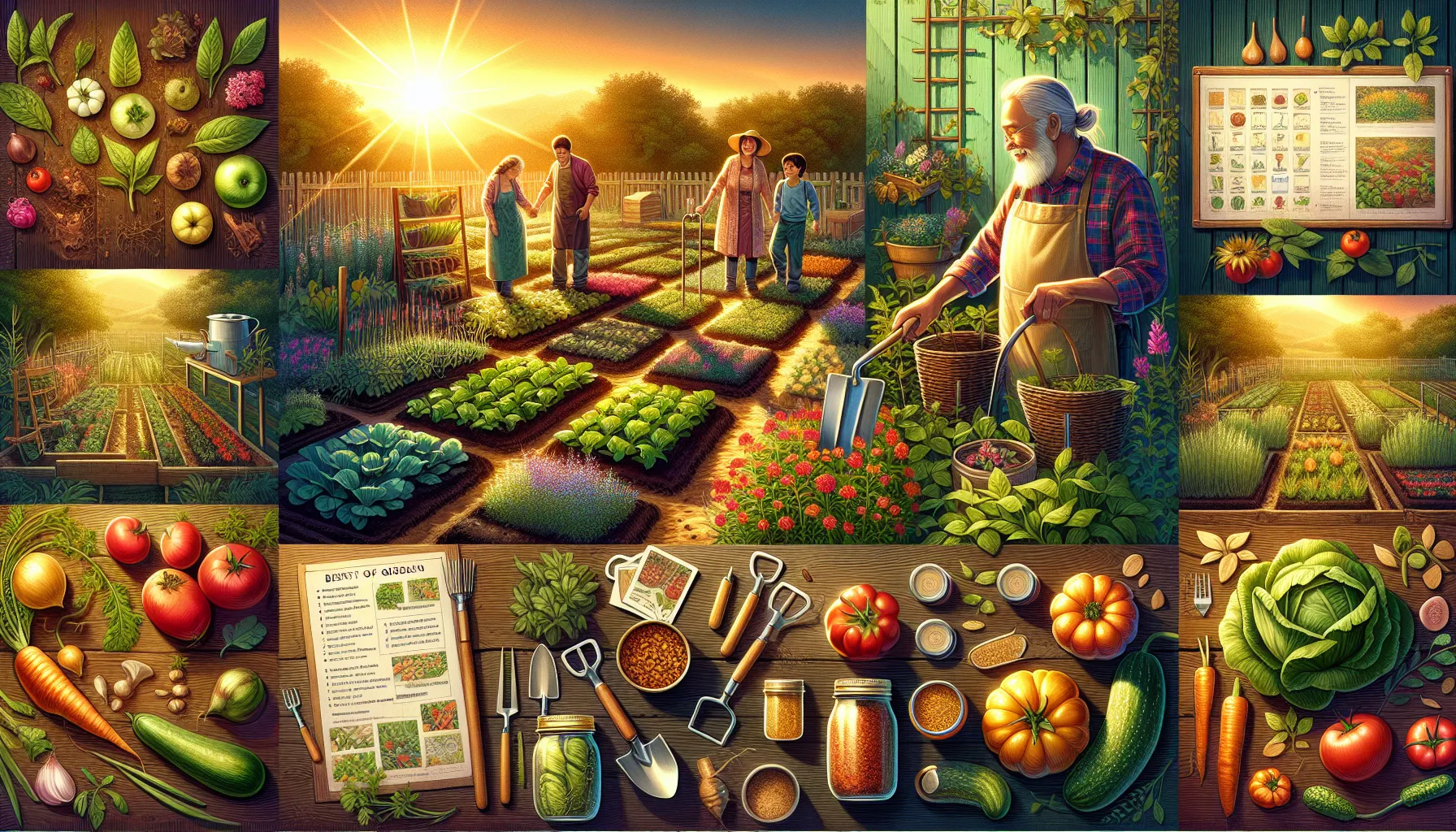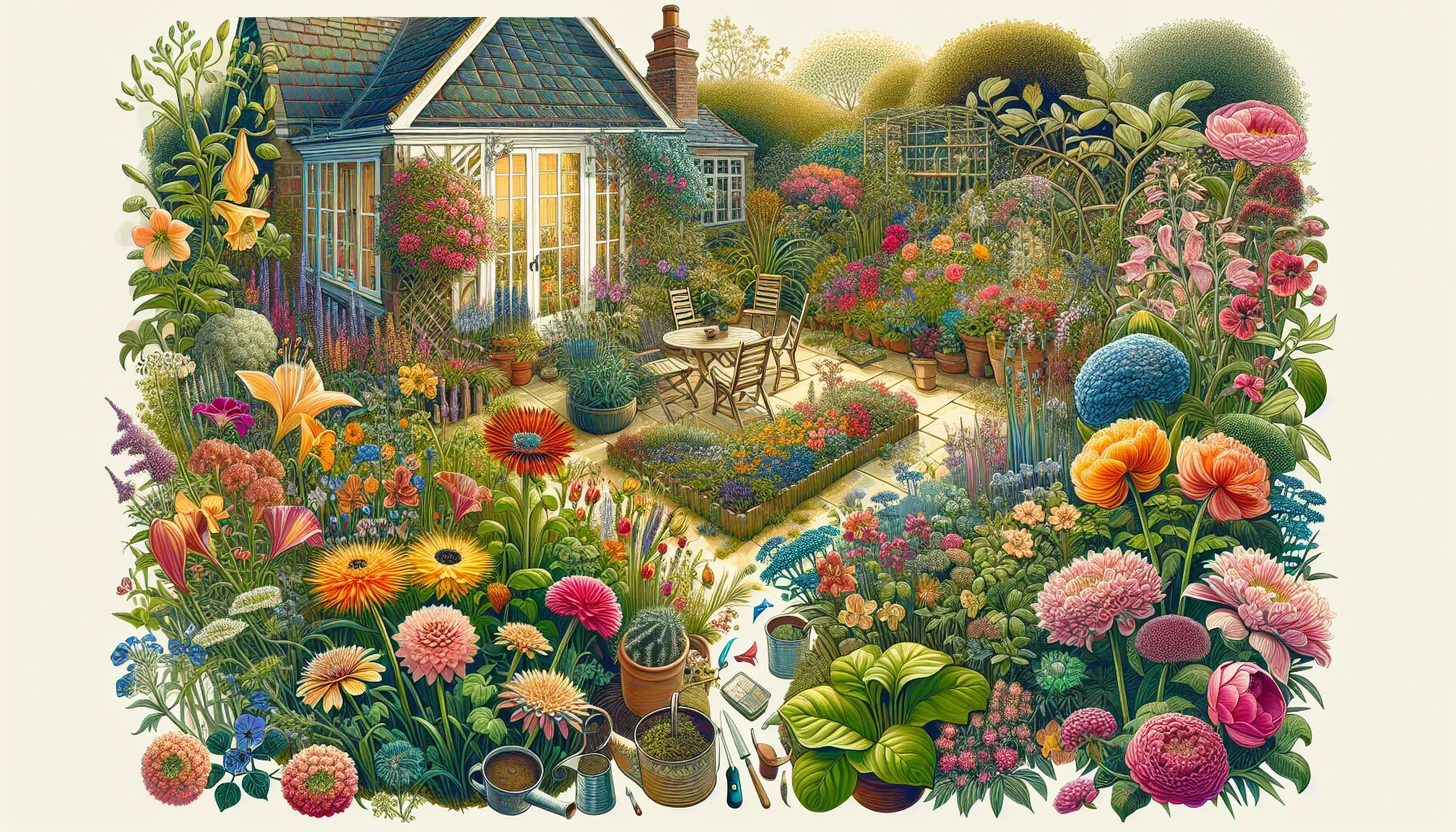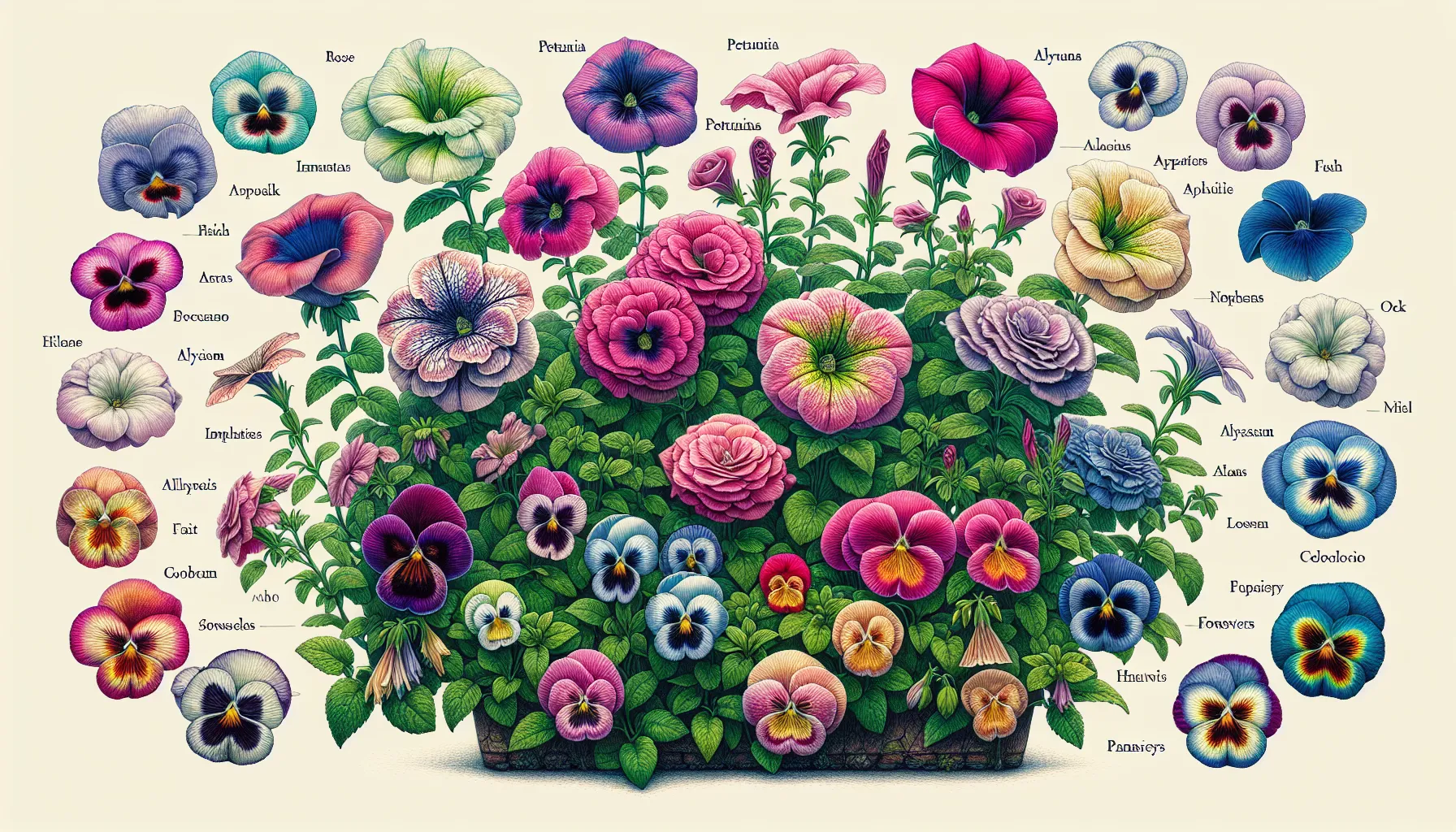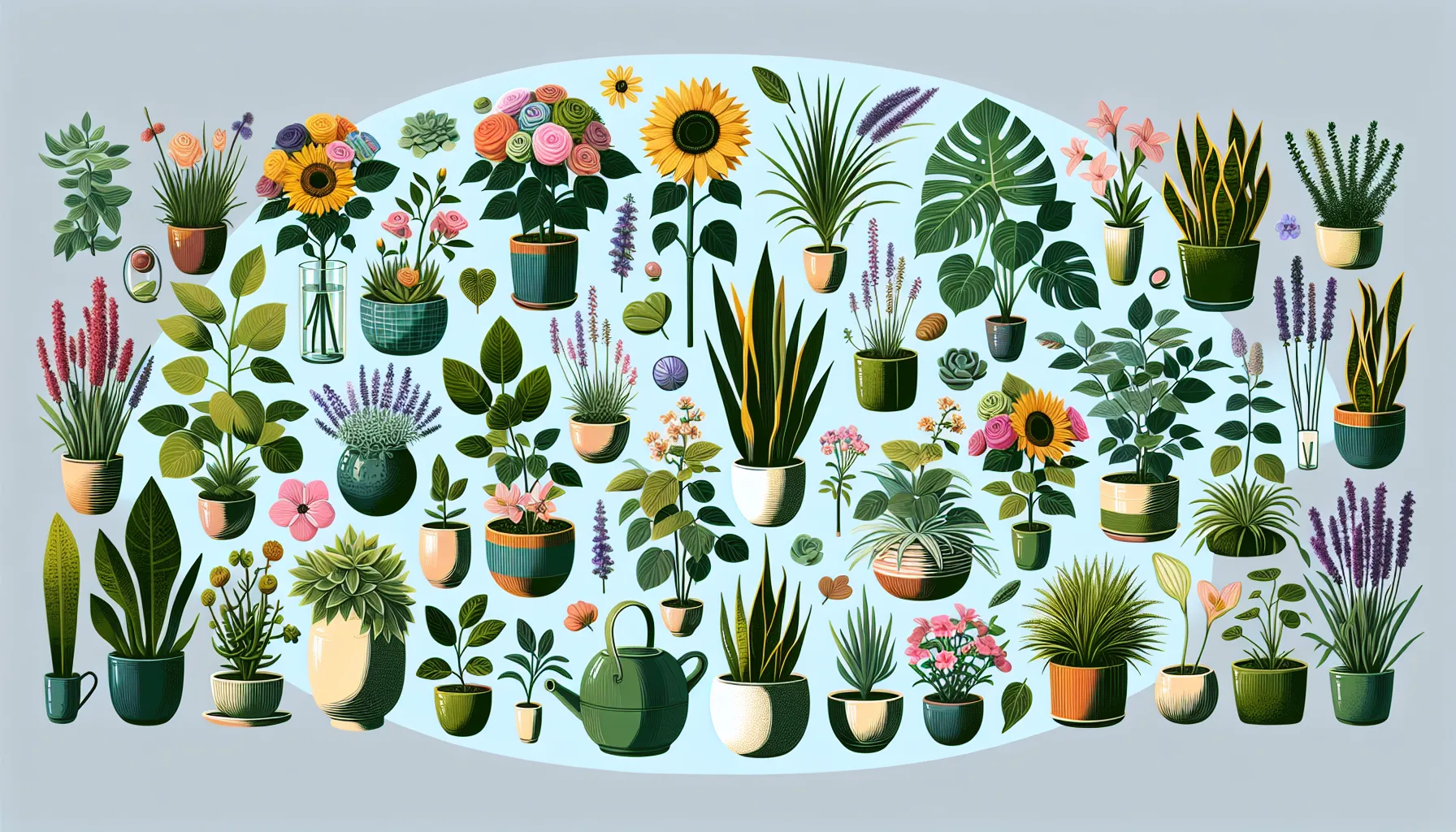
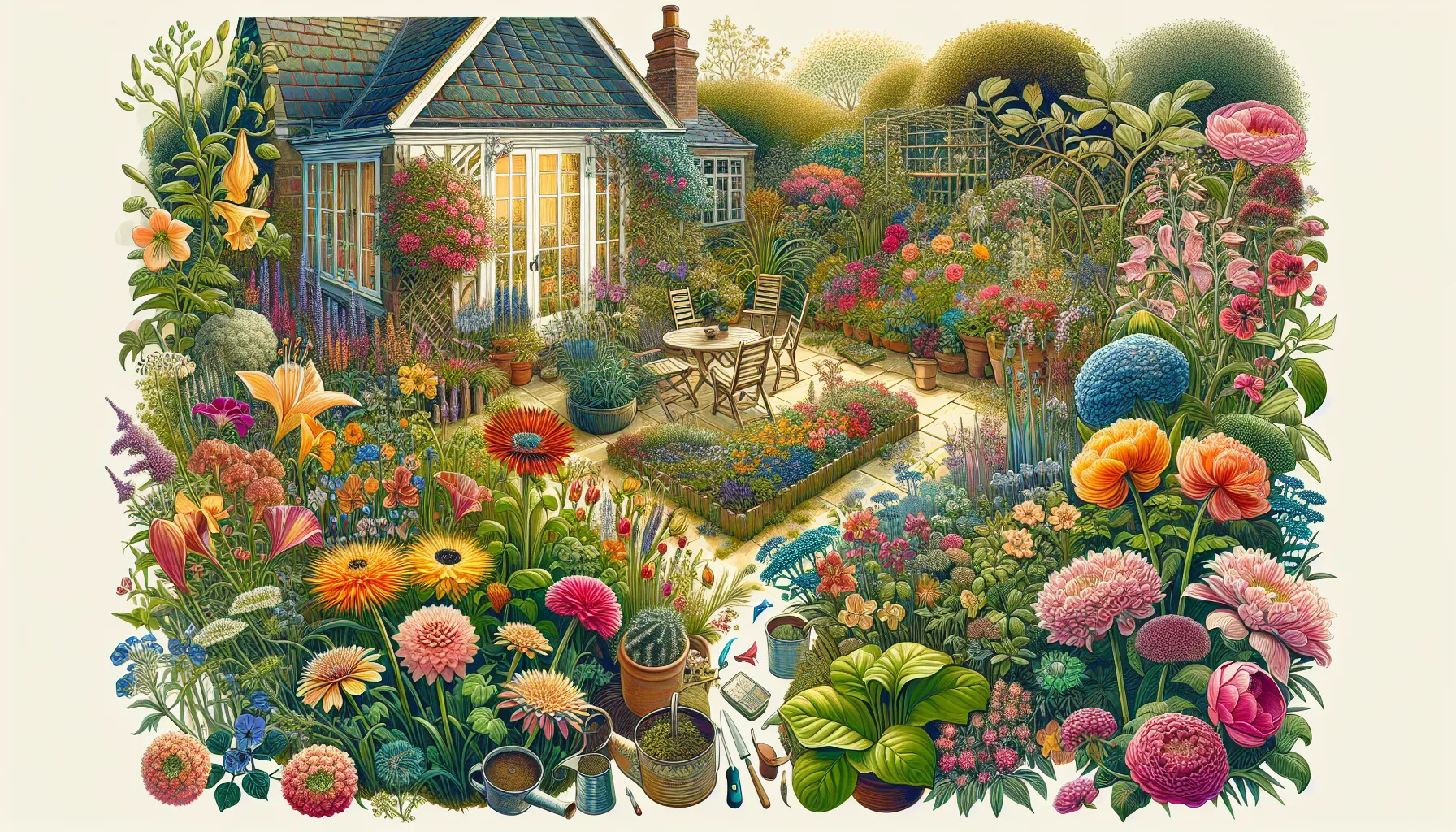
Gardens and yards without flowers are like paintings without colors. Flowers are nature’s way of adding beauty, fragrance, and vibrance to our surroundings. Imagine stepping outside to a burst of colors from flowers in your yard; it’s like having a live painting right outside your window! Not only do flowers make your yard look beautiful, but they also have several benefits that might surprise you.
One of the most obvious benefits of having flowers in your yard is the incredible range of colors and fragrances they bring. From the deep reds of roses to the bright yellows of sunflowers, each flower adds its unique touch to the landscape. And let’s not forget the sweet, spicy, or fresh scents that flowers release, making your yard a feast for the senses.
Flowers are like magnets for wildlife. Watching butterflies, bees, and birds visit your garden can be a delightful experience. These visitors not only add life to your yard but also play a crucial role in pollination, helping your garden flourish.
Gardening, including tending to flowers, is a fantastic way to improve both your mental and physical health. Studies have shown that gardening can reduce stress, lower blood pressure, and even improve your mood. The physical activity involved in gardening, such as digging and planting, is great for keeping your body active as well.
By planting flowers, you’re contributing to the environment in several impactful ways. Flowers provide essential habitats and food sources for many insects and birds. Additionally, plants help to purify the air by absorbing carbon dioxide and releasing oxygen, making your yard a little green lung in your neighborhood.
Growing your own flowers is a cost-effective way to beautify your home. Instead of spending money on expensive artificial decorations that may fade over time, investing in flower seeds or plants can offer you a continuous supply of natural beauty. Plus, you have the satisfaction of knowing you’ve grown them yourself.
In conclusion, whether it’s for the sheer beauty, the environmental benefits, or the mental and physical health advantages, having flowers in your yard can transform your space in more ways than one. So, why not start planning your flower garden today and enjoy the myriad of benefits it brings?
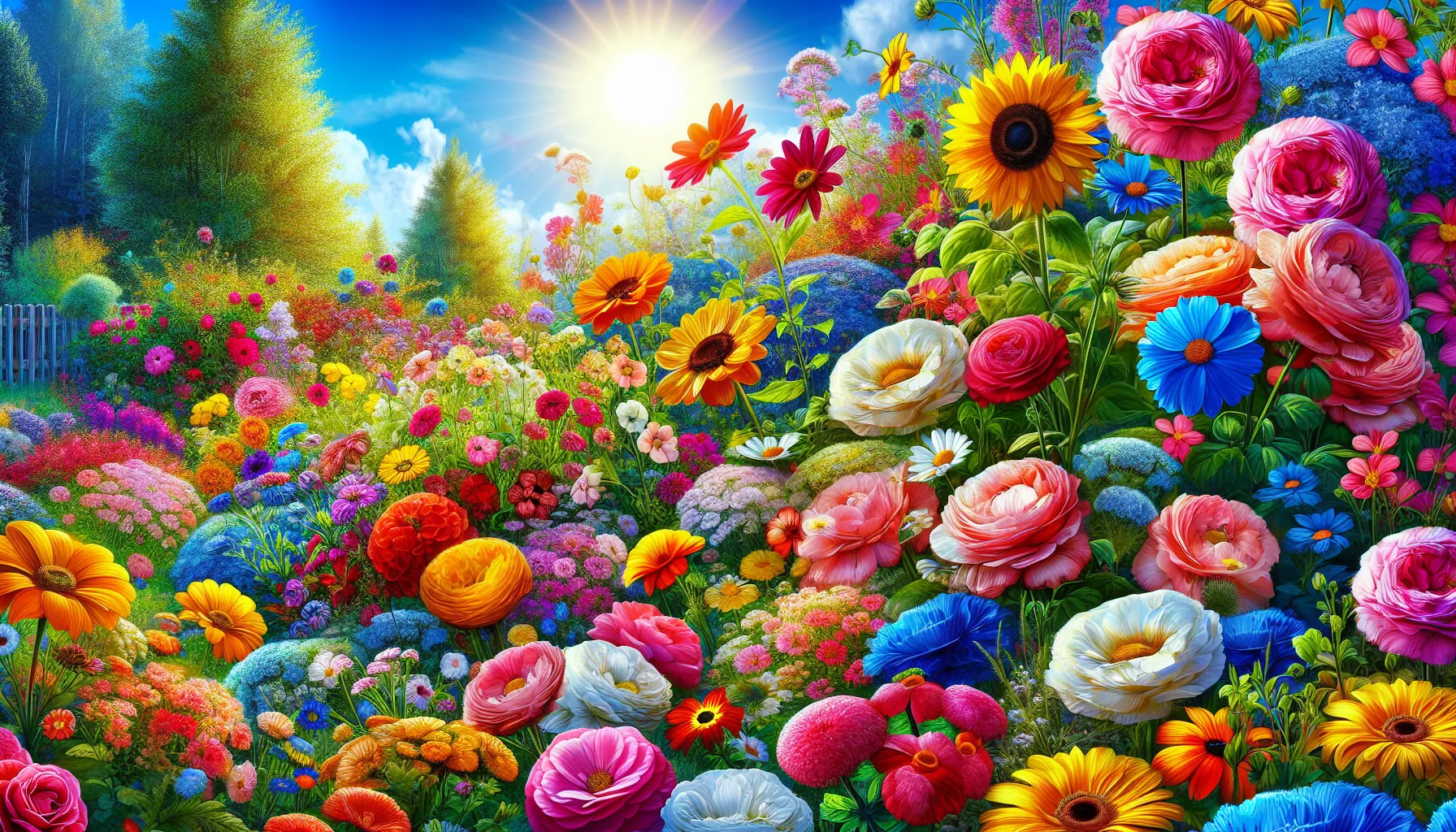
When you want to make your yard look its best, picking the right flowers is a big deal. You want flowers that not only look good but also flourish in your yard. Here’s how you can pick the perfect blooms for your space.
The first step is to think about where you live and what the weather is like. Not all flowers can grow in all places. For example, if you live somewhere very hot, like Texas, you might go for sun-loving flowers like marigolds or zinnias. If you’re in a cooler spot, like Maine, you might choose flowers that like less heat, such as petunias or impatiens.
It’s also smart to look at the USDA Plant Hardiness Zone Map. This tool tells you what plants will do well in your specific area. By choosing plants that match your zone, you’ll have a better shot at growing a beautiful flower garden.
If you’re busy or just starting with gardening, you might want flowers that don’t need a lot of babysitting. Some flowers are just naturally easier to take care of than others. For a hassle-free garden, consider these options:
These flowers don’t need a lot of special attention. Just plant them in the right spot, give them some water, and they’ll be pretty happy.
Adding color to your yard isn’t just about picking your favorite shades. It’s about making colors work together in harmony. Here are a few tips to make your flower beds pop:
Think About Color Combinations: Flowers come in all colors, so think about which ones go well together. For a calming effect, use colors that are next to each other on the color wheel, like blue and purple. For a more vibrant look, choose colors opposite each other, like yellow and purple.
Consider Bloom Time: Make sure you have flowers that bloom at different times so your garden is always colorful. For example, crocuses bloom in spring, roses in summer, and chrysanthemums in fall.
Play with Height and Texture: Mix tall flowers like snapdragons with shorter ones like pansies. Add textures too – fluffy flowers like asters with sleek ones like tulips can create a beautiful scene.
By focusing on these aspects, you can create a flower bed that stands out. Whether you’re aiming for a peaceful retreat or a joyful rainbow of colors, the right flower choices make all the difference. Remember, your yard is your canvas, so have fun painting it with the best flowers for your space!
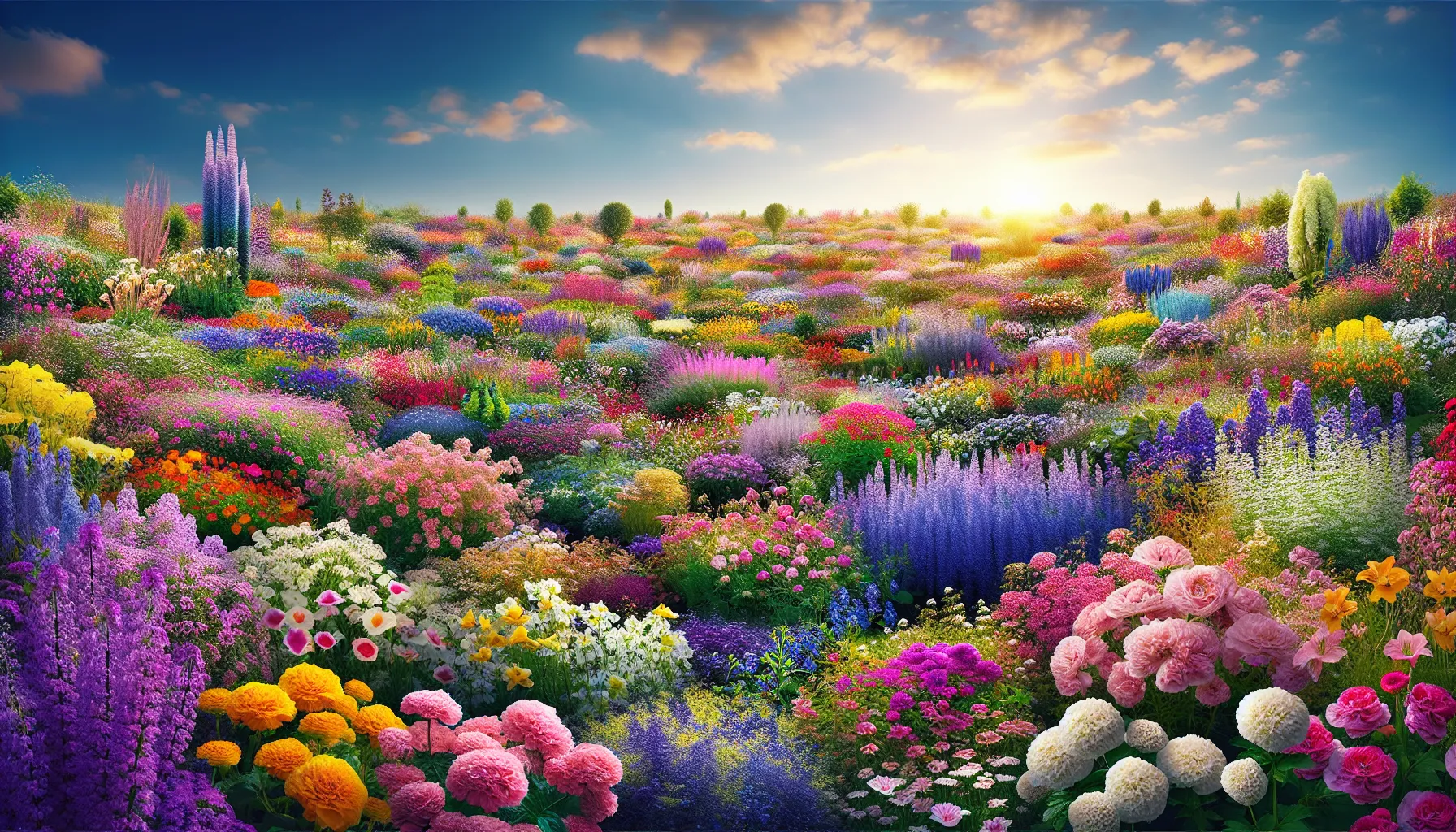
Decorating your yard with flowers is like painting nature’s artwork right outside your home. Each flower brings its unique splash of color, texture, and fragrance. Let’s explore some of the most popular yard flowers that can transform your outdoor space into a vibrant sanctuary.
Roses have been adored for centuries, not just for their beauty but also for their symbolism of love and passion. They come in a rainbow of colors, including red, pink, white, and yellow, each variety having its unique scent and appearance. Planting roses requires a bit of effort upfront – they need well-drained soil and at least six hours of sunlight each day. However, once established, they can bloom repeatedly throughout the growing season, providing your garden with lush colors and enchanting fragrances.
Tulips signal the arrival of spring! These bulbous plants are among the first to bloom when winter fades, offering a bright array of colors that can light up any yard. From deep purples and reds to sunny yellows and whites, tulips can create a stunning visual effect when planted in large groups. They prefer cooler climates and well-drained soil. To enjoy their beauty year after year, plant the bulbs in the fall before the ground freezes.
There’s hardly a flower more cheerful and vibrant than the sunflower. Towering high, with their golden faces turned towards the sun, they can bring joy to any space. Sunflowers are incredibly easy to grow, making them a great choice for young gardeners or those new to gardening. They need full sun and grow best in fertile, well-drained soil. Besides adding beauty to your yard, sunflowers also attract bees and birds, adding life and movement to your garden.
Lavender is loved not just for its delicate purple blooms but also for its soothing fragrance. This hardy plant is surprisingly easy to grow and is a great addition to any yard looking for a touch of color and a calming aroma. Lavender thrives in full sun and well-drained soil, making it perfect for dryer climates. Once established, it requires minimal water, making it an excellent option for eco-friendly gardens. Lavender blooms throughout the summer, attracting bees and butterflies, which adds another layer of beauty and activity to your yard.
Adding these flowers to your yard can create a space that’s not only beautiful to look at but also enjoyable to spend time in. Whether you’re looking to add fragrance, color, or both, these popular yard flowers are sure to brighten up your outdoor space.
I’ve always been fascinated by the beauty of flowers, especially when they bloom in my yard. One summer, I decided to dedicate more time to my yard and started planting different types of flowers. I opted for roses, tulips, sunflowers, and lavender, after reading about their popularity among gardeners.
As I planted each flower and watched them grow, I found myself feeling more connected to nature and at peace with myself. The vibrant colors of the sunflowers and the fragrant scent of the lavender brought a sense of calmness to my busy life.
Taking care of my yard flowers became a therapeutic activity for me. I would spend hours tending to them, watering them, and watching them bloom. It was a simple yet rewarding experience that brought me joy and a sense of accomplishment.
Now, whenever I look at my yard filled with beautiful flowers, I am reminded of the peace and solace that gardening has brought into my life. It’s amazing how something as simple as planting and nurturing flowers can have such a profound impact on one’s well-being. I am grateful for the happiness and serenity that my yard flowers have brought me.
Peonies: Known for their big, fluffy blooms and sweet fragrance, peonies are a timeless favorite in any yard. These flowers come in a variety of colors and are perfect for creating a romantic and whimsical look in your garden.
Hydrangeas: With their large, showy blossoms and lush foliage, hydrangeas are a stunning addition to any yard. These versatile flowers come in a range of colors and can thrive in both sun and shade, making them a popular choice for many gardeners.
Dahlias: Dahlias are prized for their intricate, vibrant blooms that come in a wide array of shapes and sizes. These flowers are a great way to add a pop of color to your yard and make a bold statement in any garden bed.
Lilies: Lilies are elegant and graceful flowers that are sure to make a statement in your yard. These blooms come in a variety of colors and can be planted in borders, containers, or as a focal point in your garden.
Geraniums: Geraniums are versatile flowers that are easy to grow and come in a range of vibrant colors. These blooms are perfect for adding a splash of color to your yard and are great for attracting pollinators like butterflies and bees.
Roses are known for their low-maintenance nature, making them a great choice for yard flowers. They are hardy plants that can withstand various weather conditions and require minimal care to thrive.
Sunflowers are excellent for attracting pollinators such as bees and butterflies with their vibrant blooms and abundant nectar. Planting sunflowers in your yard can help support local pollinator populations and promote biodiversity.
Lavender is known for its strong scent, which acts as a natural repellent for pests such as mosquitoes, flies, and moths. Planting lavender in your yard can help keep unwanted pests at bay while adding a beautiful and fragrant addition to your outdoor space.
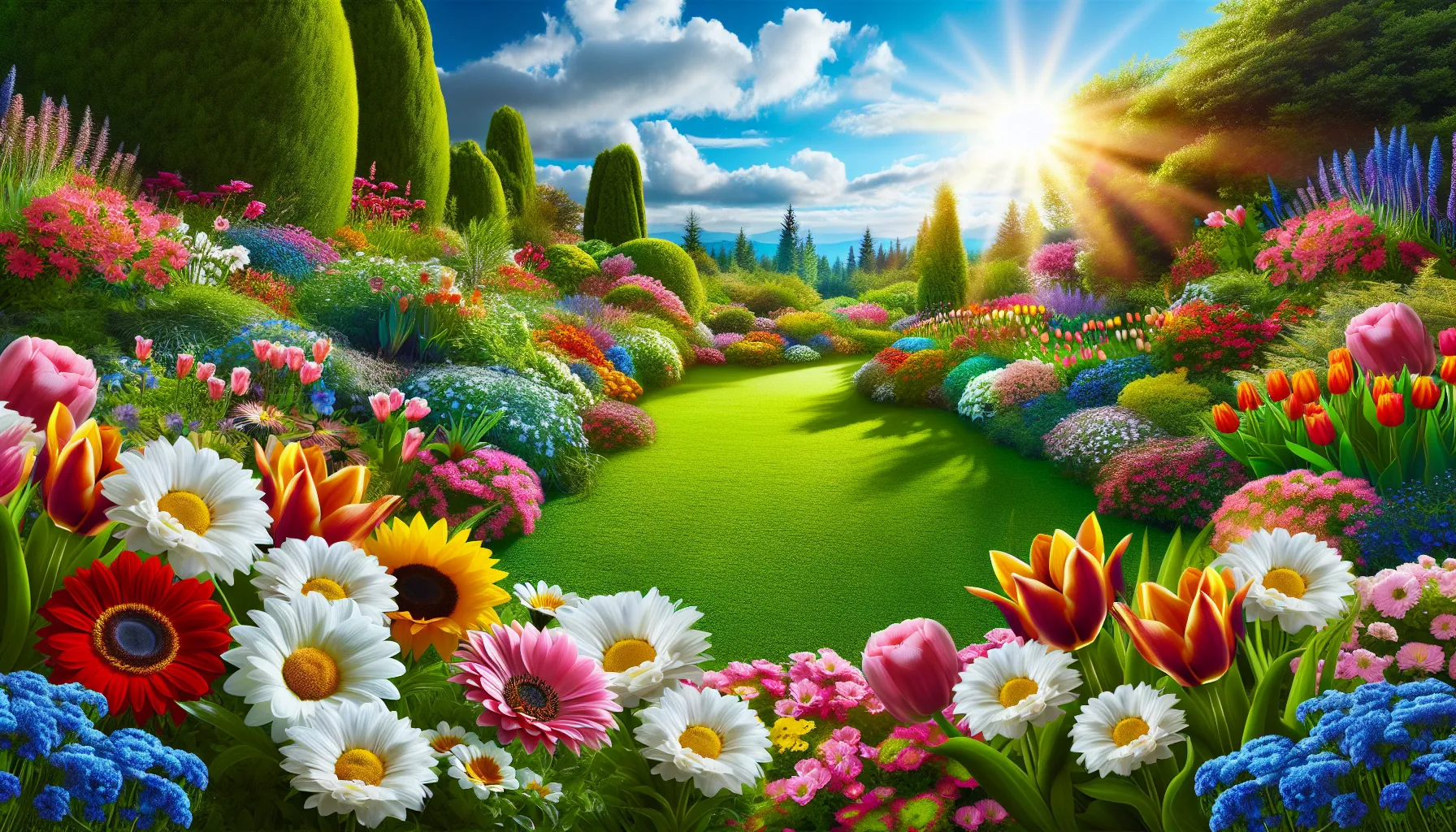
Taking care of your yard flowers doesn’t have to be a tough job. If you do a few simple things, your flowers will bloom and look beautiful. Let’s talk about the basics, like watering, feeding, and keeping those pesky bugs away.
Water is like a magic drink for plants. It helps them grow big and strong. But, just like Goldilocks found out, the amount has to be just right—not too much and not too little.
Think of fertilizer like vitamins for your flowers. They give your plants an extra boost of nutrients they need to grow strong.
Bugs and critters might think your flowers are their personal snack bar. Here’s how to keep them at bay.
Remember, taking care of your yard flowers is all about the basics: water, food, and keeping the bugs away. Stick to these simple guidelines, and you’ll have a garden that’s the envy of the neighborhood!
Designing your yard with flowers is not just about picking your favorite colors and scattering them around. It’s about creating a beautiful, cohesive look that invites you into the space. Let’s dive into some effective ways to design your yard using flowers, focusing on layering with different heights, using containers for versatility, and creating focal points.
One of the keys to a visually interesting garden is layering plants of different heights. Imagine you’re painting a picture; you want to have a foreground, middle ground, and background. Start with taller plants at the back of your garden beds or along fences. These can be taller perennial flowers or even shrubs that provide a green backdrop year-round.
Moving towards the middle of your garden beds, consider medium-height plants. These can be your colorful flowers that really stand out against the taller, perhaps less colorful, background plants. Great options are daylilies, coneflowers, and black-eyed Susans which bring a pop of color.
Finally, at the front of your beds or along walkways, place your shorter plants and flowers. These can be ground cover types like creeping thyme or colorful annuals like pansies and petunias that you can change up every year for a new look.
Containers are a gardener’s best friend when it comes to versatility in garden design. They allow you to bring flowers into areas where planting in the ground might not be an option, like patios or balconies. Containers can also add height to your garden design by placing them on stands or hanging them.
When selecting containers, choose ones that complement your home’s exterior and the overall garden design. Mix and match different sizes and colors of containers for a playful look, or keep them all the same for a more unified appearance.
You can plant a single type of flower in each container for a bold statement or mix different flowers in one container for a mini garden effect. Remember to choose plants with similar water and sunlight needs when mixing.
Focal points draw the eye and add interest to your yard. You can create these eye-catching spots with a group of the same type of flower or a particularly striking plant. Consider placing a tall, flowering plant like a hollyhock or a cluster of bright sunflowers in an area where you want to draw attention.
Another way to create a focal point is by designing a specific flower bed around a feature like a statue, fountain, or bench. The flowers should enhance the feature, not compete with it, so choose colors and heights that complement it.
Using different colors can also create a focal point. For example, a cluster of red roses among green shrubs can immediately catch someone’s eye. Similarly, a path lined with white flowers leading to a seating area invites people into the space, making it a focal point of your yard.
By implementing these design principles—layering with different heights, using containers for versatility, and creating focal points with flowers—you can transform your yard into a beautifully designed space that reflects your personality and welcomes visitors with open arms.
| Technique | Flower Examples | Container Suggestions | Focal Point Tips |
|---|---|---|---|
| Layering with Different Heights | Daylilies, Delphiniums | Raised Beds, Tiered Planters | Use taller plants at the back |
| Using Containers for Versatility | Petunias, Begonias | Ceramic Pots, Hanging Baskets | Reposition containers seasonally |
| Creating Focal Points with Flowers | Roses, Sunflowers | Statement Planters | Plant in odd numbers for impact |
Adding flowers to your yard is like putting the finishing touches on a painting – it truly brings your outdoor space to life. Imagine the vibrant colors, the sweet fragrances, and all the butterflies and bees buzzing around. It’s not just about making your yard look pretty; it’s about creating a small sanctuary where you can relax, play, and even work with nature. Whether you went big and planted a bunch of different flowers everywhere or started small with a few pots, you’ve taken a step to make your world more beautiful. Remember, taking care of flowers, like watering them and making sure they get enough sun, is important. They’re a bit like pets but don’t need walking!
Now that you’ve seen just how magical having flowers in your yard can be, why not start your own garden? It might seem a bit scary if you’ve never done it before, but guess what? Flowers are pretty tough, and many of them are easy to take care of. You can start small with something straightforward like sunflowers or marigolds. And there’s a ton of help out there; from gardening books to online forums and even apps that remind you when it’s time to water your plants. Plus, imagine how cool it would be to see flowers blooming in your yard that you planted yourself. It’s not just about making your place look good; it’s about learning new things, getting your hands a bit dirty, and creating a space that makes you happy every time you step outside. So, go on, give it a try. Plant, water, grow, and watch your garden and your joy blossom together.

